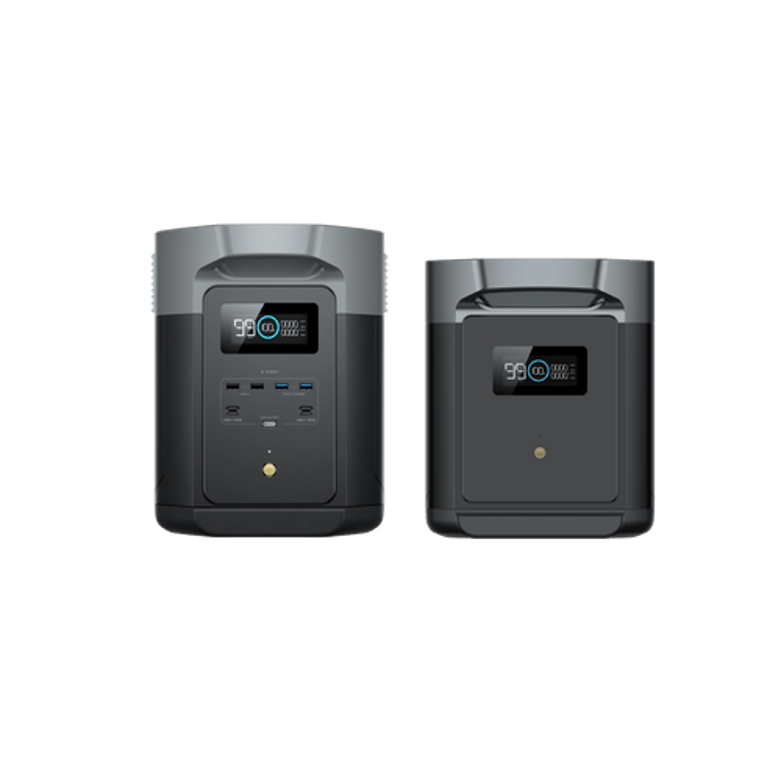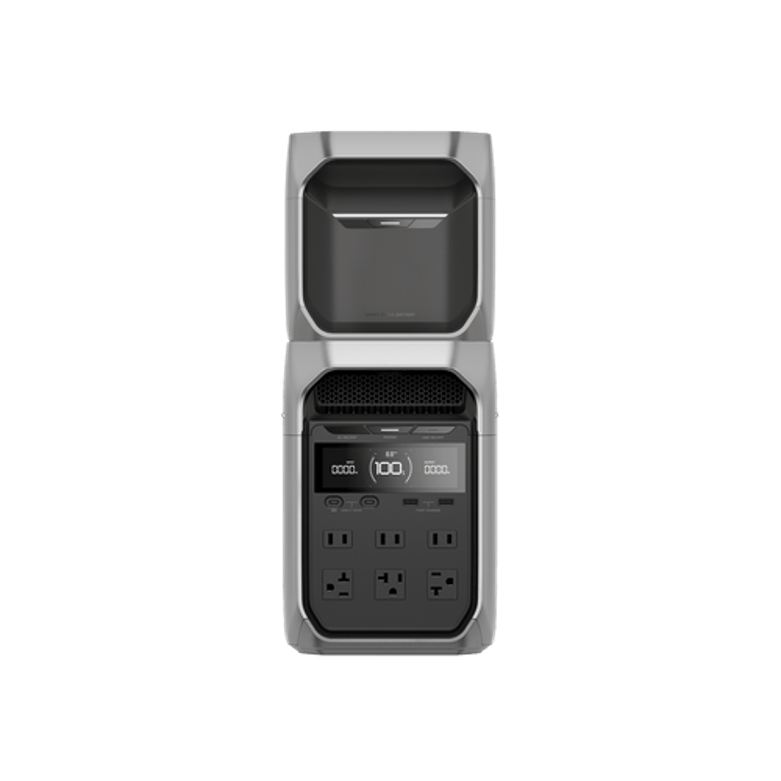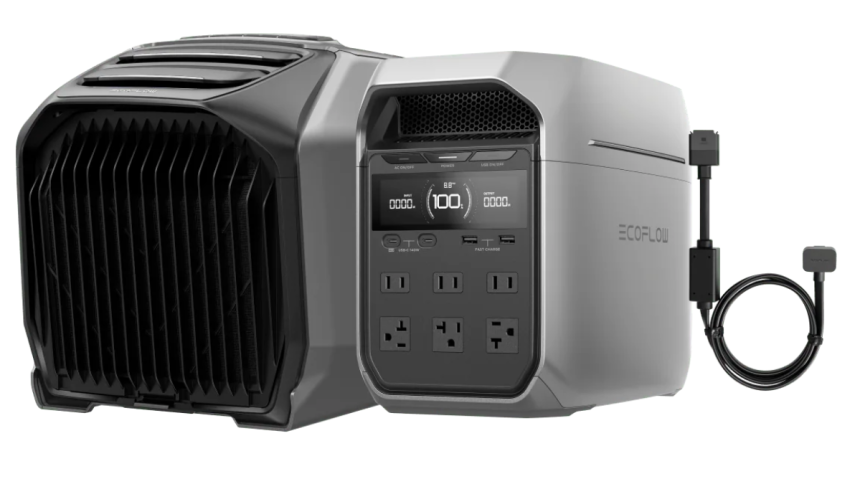Basking in the freedom of off-grid travel is all about boundless adventure and a true connection with nature, but the concern of keeping essential gadgets charged can sabotage it all. Today’s globetrotters sometimes find themselves in a technological predicament: how to keep their devices powered and still feel at-one with nature. Portable power stations have presented themselves as game changers, providing dependable, eco-friendly power wherever your travels take you. Whether those are weekend camping trips or extended RV expeditions, the right power station can mean the difference between staying connected and going dark. This detailed guide covers everything you’ll need to consider when choosing a portable power supply, from knowing basic power requirements to finding the right portable power supply for your exact travel needs. And for the RV and caravan enthusiasts among us, we explain how these multipurpose units can turn your life on the road into a totally powered up home away from home, while keeping all the green credentials.
Understanding Compact Power Stations
Compact power stations are the evolutionary step of portable power technology that combines the high performance of long-lasting battery technology with the efficiency of power management systems, all packed in a portable kit. More than just a traditional gas generator replacement, this portable generator is a professional-grade solution for all kinds of off-grid generators. No longer will you have unfriendly fumes emitting from your gas generator, or the fuel and maintenance headaches that come with it. Industry leaders like EcoFlow have introduced smart power management systems to regulate power distribution, maximize power efficiency, and safeguard devices.
Fundamentally, these units assemble superior power systems comprising a powerful rack-mountable battery bank, a reliable true-sine-wave inverter, an intelligent charge controller including an LED battery capacity output display, and AC household current with built-in handles. The radical growth of the renewable energy segment has led to a healthy technological evolution and brought more and more stable systems to market. Today’s systems utilize a pure sine wave output to power virtually all of your sensitive electronics and appliances, and technologically advanced burnout and battery management prevent burnout by accurately regulating the charge. This fusion of clean technology and practical design has resulted in a compact power station that has become an ideal solution for the power you need, right where you need it to get you connected through your mobile life.

Critical Selection Factors for Travelers
Power Capacity & Output Needs
To start, you need to know how much power you’re using – that means working out a rough figure for your daily power consumption. A standard CPAP holds a steady 30-60 watts, small fridges sip on 40-60 watts when operating, and a smartphone uses a mere 5-10 watts to charge. Multiply by how many devices are being used at once, and for how long, and you reach a figure for total watt-hours. Pure sine wave output is critical to most AC products including but not limited to laser printers, energy-efficient LED lights, TVs, laptops, and computers, as well as some medical devices including CPAP machines and nebulizers. Motor applications such as mini refrigerators require additional testing beyond power factor, and some can surge up 2-3 times running wattage.
Portability & Physical Design
The perfect power station is one that reaches a healthy equilibrium between capacity and portability, and it starts with no-nonsense units volunteering approximately 40-50 watt-hours per pound. You’ll want to check for reinforced corners and impact-resistant housing with a specifically outdoor-rated IP65 or higher namesake to be sure it’s protected from dust and water splashes. For those on the road: The dimensions under 15 inches in any direction appear to be enough to have maximum storage flexibility in RVs while providing a decent amount of power capacity.

Recharging Options & Solar Compatibility
Multiple charging options are necessary during long journeys. Look for units that can take at least 200W of solar for fast day charge, most of them having MPPT controllers that will make sure you get the most out of your precious solar panels. For vehicle charging via 12V outlet, your input should be capable of 100W or more for a useful charge time while driving. The best stations allow charging from more than one source simultaneously, which cuts charging time down greatly.
Safety & Operational Features
Primary safety mechanisms include a multilayered battery protection structure that controls cell voltage, temperature, and charging status. Seek models with built-in short circuit protection, overload protection, and temperature-controlled cooling fans. Check UL2743 and CE compliance for portable power systems. Real-time power flow and battery status are smartly displayed on the screen for proactive energy management, and generous ventilation space also minimizes the potential for overheating during use.
Matching Power Stations to Travel Scenarios
Specific travel habits require different power solutions, based on mobility and quality of life. For ultralight backpacking, lightweight stations under 5 pounds with 100-200Wh capacity are perfect for charging phones, cameras, and GPS devices on multi-day trips. As a rule, these light units are supplied with durable housings and corner guards to resist the onslaught of the trail. Car Campers – If you’re car camping, then medium capacity centers (300-500Wh) will suffice and they have enough power to power small coolers and multiple devices at once while still being reasonably portable. These models feature convenient handles and car charging that makes them easy to take along on a cross-country road trip. 1000Wh or above is suitable for RV travelers seeking to undertake longer off-grid living. These big stations have room for more battery modules, so capacity can be expanded, and plenty of power for running residential-style appliances. More than just camping, this portable power station is one of those cool camping accessories that are emergency essentials, with its copper battery that maintains power to medical devices, refrigerators, small air conditioners, communication devices, lights, audio equipment, and computers.
Step-by-Step Selection Process
Assess Your Energy Profile
Start off by running an energy assessment on your appliances to determine the power plant(s) you will require. List each of the electronics you intend to run, whether it be life-saving medical equipment or just convenience items. Record the steady state running watts and startup surge needs, which are usually printed on the equipment label or in the instruction manual. Monitor real-world usage for a few days and log the actual usage time of each device. Keep in mind what high-draw items (mini-fridges, coffee-makers) are really making a big impact on your total power needs.
Compare Key Specifications
Check their tech sheets side by side and list down details that are important based on what you need. Record the battery capacity, max AC output, charging speed, and weight for all the potential models. Ignore marketing bluster and always check the field testing of knowledgeable users, particularly when it comes to how long the battery can power your device away from mains electricity, and how well the panel works in overcast, indirect, or winter sun. Think about temperature operating ranges and altitude limits that could impact performance in your environment.
Evaluate Brand & Support
Probe manufacturers’ records on camping and RV community forums, look for long-term reliability reports. Read through the warranty coverage details, particularly the period of time the battery is covered for and the types of failures that are covered. Pose some technical questions to support about their service and see how good the response is. Also focus on the likelihood of new firmware being released and look if the company is listening to user feedback for improvements in product quality. Think about the ecosystem of compatible add-ons and expansions which could improve the usefulness of your new power station over time.
Maximizing Your Power Station
Directions: Pair with Solar Chargers for a fully recharged battery: To meet your outdoor camping/other equipment needs. Paralleling panels during cloudy days increases charge current, while series connections are recommended to boost controller charging efficiency during full sun (use of several connections may be required to route for just this). Keeping batteries healthy provides 20%-80% power during regular use; it is recommended to store at 50% power to extend battery life. Keep away from extremes of temperature and try to be in the shade in summer and insulated when camping in the winter. Recommended accessories are extension cables that are able to handle the load of heavy-duty machines to the maximum output of your device, outdoor weatherproof tent plugs, and specific RV mounting systems. Keep an eye on ventilation clearance, and use moisture-absorbing silica gel packets in compartments if being used in breezy areas or super hot climates. You may want to include a pure sine wave inverter splitter for multiple AC devices at once with consistent power.
Essential Guide to Sustainable Travel Power
Choose the perfect portable power station and live the great outdoors without worrying about running out of power, all while being responsible for the environment. The secret is that you want to perfectly match your power requirements with capacity, so be sure to know what your devices demand before spending! Not to mention that real portability combines with out-of-the-box simplicity; that’s get-up-and-go convenience for all your holding-the-hill aspirations. When considering options, we go for units with safety features and brands that have great ready-backup. Think about your travel style: Are you a minimalist backpacker or a full-RV kind of traveler? Before you make the purchase, go down and tick off this crucial list: Determine the total amount of power needed daily, ensure you have a solar charging compatible device, make sure it physically fits in your available space, and inquire about warranty conditions. By following these recommendations and knowing your power profile, you’ll choose a compact power station that provides a consistent charge to support your outdoor lifestyle and helps to make travel via clean energy a cleaner, more sustainable reality.
Lynn Martelli is an editor at Readability. She received her MFA in Creative Writing from Antioch University and has worked as an editor for over 10 years. Lynn has edited a wide variety of books, including fiction, non-fiction, memoirs, and more. In her free time, Lynn enjoys reading, writing, and spending time with her family and friends.















